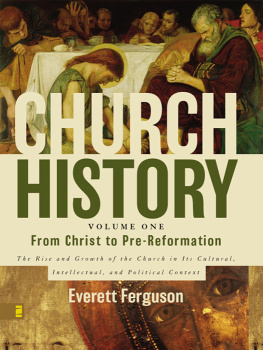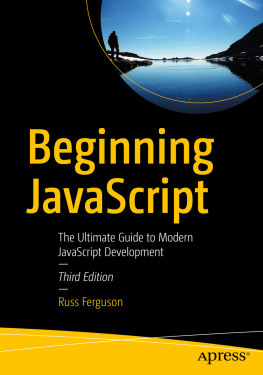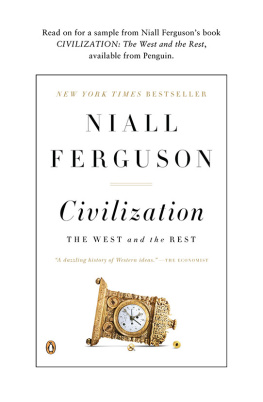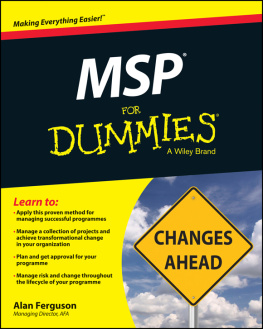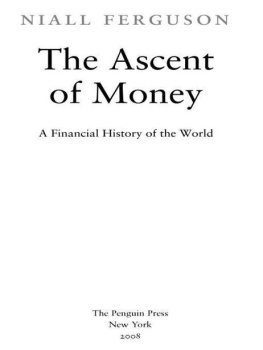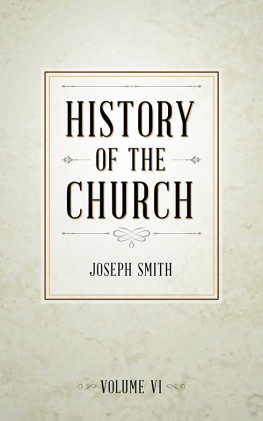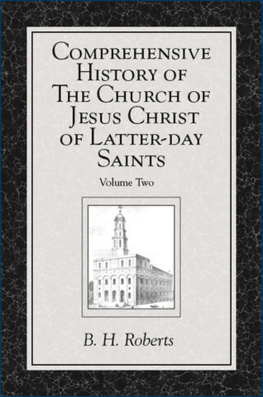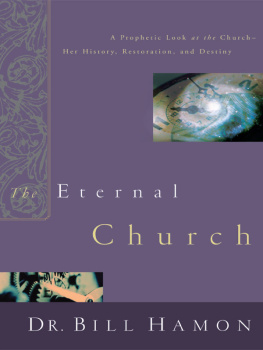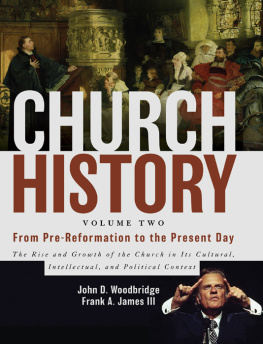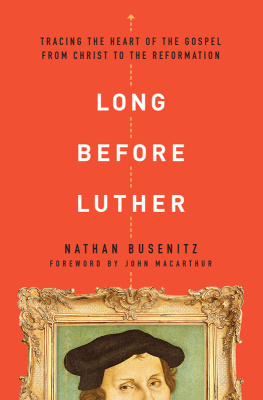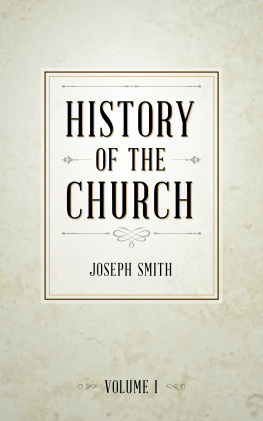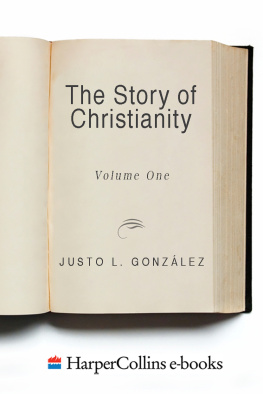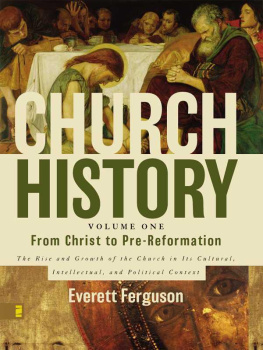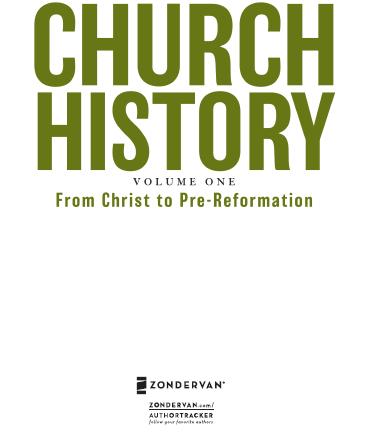
About the Author
Everett Ferguson (Ph.D., Harvard) is professor emeritus of Bible and distinguished scholar-in-residence at Abilene Christian University in Abilene, Texas, where he taught Greek and church history. He is the author or editor of numerous works, including Backgrounds of Early Christianity (author) and the two-volume Encyclopedia of Early Christianity (ed.).
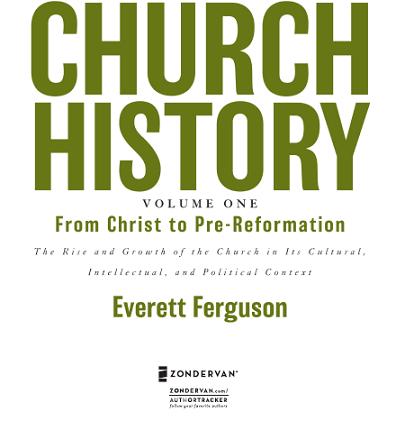
ZONDERVAN
CHURCH HISTORY VOLUME ONE: From Christ to Pre-Reformation
Copyright 2005 by Everett Ferguson
All rights reserved under International and Pan-American Copyright Conventions. By payment of the required fees, you have been granted the non-exclusive, non-transferable right to access and read the text of this e-book on-screen. No part of this text may be reproduced, transmitted, down-loaded, decompiled, reverse engineered, or stored in or introduced into any information storage and retrieval system, in any form or by any means, whether electronic or mechanical, now known or hereinafter invented, without the express written permission of Zondervan.
ePub Edition July 2009 ISBN: 978-0-310-82936-2
Requests for information should be addressed to:
Zondervan, Grand Rapids, Michigan 49530
Library of Congress Cataloging-in-Publication Data
Ferguson, Everett, 1933
Church history / Everett Ferguson.
p. cm.
Includes bibliographical references.
ISBN-13: 978-0-310-20580-7
1. Church historyTextbooks. I. Title.
BR145.3.F47 2004
270dc22
2004020348
Unless otherwise indicated, the photos were taken by and are the property of the author.
All Scripture quotations, unless otherwise indicated, are taken from the Holy Bible: New International Version. NIV. Copyright 1973, 1978, 1984 by International Bible Society. Used by permission of Zondervan. All rights reserved.
All rights reserved. No part of this publication may be reproduced, stored in a retrieval system, or transmitted in any form or by any meanselectronic, mechanical, photocopy, recording, or any otherexcept for brief quotations in printed reviews, without the prior permission of the publisher.
06 07 08 09 10 11 12 10 9 8 7 6 5 4 3
To the students who will use this textbook.
May they enter into the adventure of the life of the church
as they extend its history into the days ahead.
Church History Volume Two: Reformation to the Present
by John D. Woodbridge and Frank James III is forthcoming.
Contents in Brief
Contents
MAPS
CHARTS
ILLUSTRATIONS
Church history is the study of the history of Gods people in Christ, a theological claim, or, speaking more neutrally, of those who have wanted to be Gods people in Christ. It is a mixed people, and the story is a mixed story. This comes as no surprise, of course. Just as the biblical record of the people of God is the story of a mixed people with great acts of faith and great failures in sin and unfaithfulness, so is the history of the people who have made up the church through the ages.
The contemporary student may find relative degrees of faithfulness and unfaithfulness in all areas of the churchs life: doctrine, public worship, prayer and devotion, evangelism and missions, quality of fellowship and caring, and Christian living (morality and benevolence).
The study of church history may help one to pass judgment on what is perceived to be unfaithfulness in any area with sympathy and humility and a resolution to learn from the mistakes of the past; and it may teach one to rejoice in expressions of faithfulness with gratitude and a desire to imitate.
History necessarily entails some attention to names, external events, and the sequence of development, but the student should look beyond these things to the religious life of the people involved and grasp the perspective that this is the story of people.
Those who profess to dislike history may as well profess to dislike people. What they really mean is that they dislike the externals, the framework of information. Such details are necessary to the telling of the story, but the real story itself is the people who were involved. And they were a very human people, in spite of the theological affirmation of being a redeemed people.
The author writes from the perspective that church history is the story of the greatest community the world has known and the greatest movement in world history. It is a human story of a divinely called people who wanted to live by a divine revelation. These are people who have struggled with the meaning of the greatest event in history, the coming of the Son of God.
As a participant in the heritage of Western church history, the author necessarily gives more attention to the history of Christianity in the West. But as committed to the wholeness of Christian history, I have tried to give adequate attention to other expressions of Christianity. So, although the primary narrative thread for the period covered will be western Europe, especially the British Isles, the global and ecumenical environment of the twenty-first century requires coverage of Africa, eastern Europe, and Asia.
Nothing is more relevant for understanding the present than the history of the past experiences of those who sought to follow Jesus Christ. Out of the conviction that the proper way to approach contemporary problems is historically, the author of this textbook hopes to bring a historical consciousness to its readers.
I ask therefore that one think rather of the intention of the writer than of his work, of the sense of the words rather than the rude speech, of truth rather than beauty, of the exercise of the affections rather than the erudition of the intellect.
Bonaventura, The Minds Road to God, Prologue 5.1
Three concentric circles of influence circumscribed the world in which early Christianity began. From the outside moving in, these influences were the Roman, the Greek, and the Jewish. The pattern of growth in the early church was the reverse, from the Jewish, to the Greek, to the Roman worlds. Unlike the mathematical image, however, these worlds were not sharply differentiated from each other, and the boundaries were quite porous.
Nevertheless, the classification of influences is helpful in grasping the environment in which the early church began. Moreover, these influences remained formative for much of subsequent Christian history.
When the time had fully come, God sent his Son, born of a woman, born under law(Galatians 4:4).
Luke sets the story of Jesus and the early church firmly within Roman history, noting Jesus birth under the emperor Augustus, his ministry under Tiberius, and mentioning the Roman governors and other officials with whom Jesus and later Paul had encounters (Luke 2:12; 3:1; Acts 13:7; 18:12; 24:27). Rome provided the larger governmental, military, and legal context of early Christianity.
At the birth of Jesus, Rome had recently completed the transition from the Republic to the imperial Principate under Augustus (27 BCAD 14). Not long before that, the Roman general Pompey had conquered Palestine in 63 BC, and thereafter Rome ruled the Jewish homeland, alternating various administrative arrangements through which it exercised its will: legates based in Syria; client kings like Herod the Great, during whose rule Jesus was born; and governors like Pontius Pilate, under whom Jesus was crucified.

Next page
